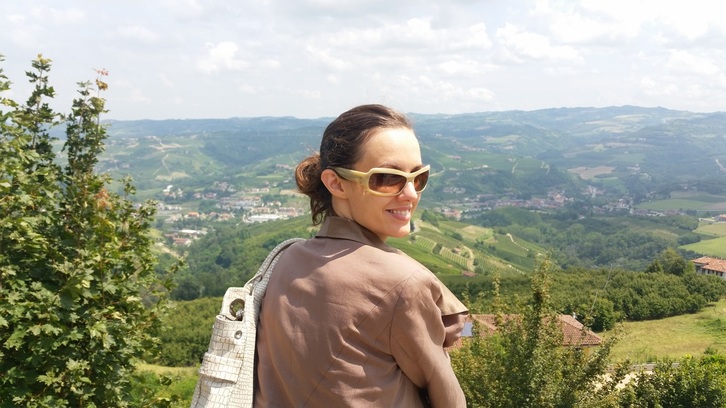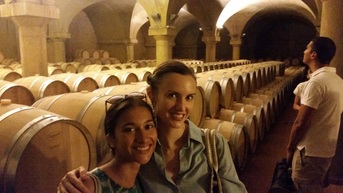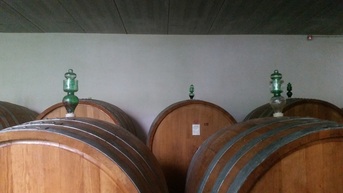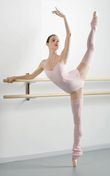But even after ballet was created in the mid-sixteenth century, wine and dance did not part ways. Fine wine at the time became dependent upon the patronage and palates of kings and nobles (like the House of Savoy or the Marchesa di Barolo in the part of the world I visited this summer) just as ballet, born of royal courts, relied upon the whims and predilections of particular monarchs throughout its development (Catherine de Medici, Louis XIV). Both ballet and wine have had odd
Terroir, the oenological concept of taste derived from place, certainly corresponds to ballet. Though ballet was originally an amalgam of French and Italian court behaviors, the way that ballet technique and style evolved so idiosyncratically in France, Italy, Denmark, Russia, Britain, and the U.S. as it expanded in popularity reflects the way that wine varietals express themselves differently in various milieu. The effervescent ballon and calm épaulement of the Danes’ balletic Bournonville tradition is as different from the Bolshoi’s leggy, pyrotechnical drama as the Sauvignon Blanc grape turns out when grown in Sancerre (mineral, crisp) vs. in New Zealand (grassy, intense, often with a hint of cat piss—meant as a compliment in the wine world!). Wine and ballet are influenced by everything from local geography, customs, politics, and economics to the weather.
Also, the legacies of ballet and wine (and all the arts, really) are in constant flux between the giant goal-post concepts of Traditionalism and Modernism. This remains a lively dispute in the Barolo region where harvests are still done by hand but modern machinery is employed in the wineries; and where the debate between whether it is better to age nebbiolo in small French oak barrels or in large, classic Italian botti made from Slovenian oak continues. From what I gleaned this summer, many of the most successful vintners in the Piedmont today use a hybridized approach that nods to the winemaking legacy of the region while also improves upon it. Ballet was wrapped up in the Traditional/Modern controversy from the very start. Homans notes that from its inception, ballet claimed to be a throwback to classical Greek and Roman practices even though the positions and movements were completely new and based upon fencing and the social hierarchy of the French royal court. Homans says that Louis XIV apparently liked to dress in Roman garb and play the ultimate role of the sun god Apollo in a nod to ballet’s “classical” heritage.
Incidentally, the figure of Apollo looms large throughout ballet’s history, for Apollo represented a major, and ironically Modernist, turning point for George Balanchine too. His biographer Bernard Taper writes that Balanchine’s early incubation in the closed-off Soviet Union led Serge Diaghilev, impresario director of the Ballets Russes, to tell him that he had talent but no taste. Taper recounts how Diaghilev explained to the then twenty-year old Balanchine (in a metaphor fitting for this post) that he was “like someone who carefully prepares an elegant and delicious meal and then, when his guests are waiting for just the right wine to go with it, brings them a big jug of water.” Under Diaghilev’s tutelage, Balanchine’s exposure to the European avant-garde markedly changed his artistry. Balanchine utilized his traditional Russian background as a base throughout his career, but he adapted ballet into his signature form of neoclassicism from there.
In light of the Lukacs’s book, I have begun to look at the iconic Russians of the Ballets Russes—Diaghilev, Nijinksy, Nijinska, Balanchine—as garagistes of sorts. They brought their own distinctive breed of ballet to ballet’s homeland and stirred up the art form, much like the indie winemakers in Bordeaux who challenge the big chateaux right in their own backyards. Thanks to patronage of Lincoln Kirsten, Balanchine moved on and reworked his style yet again in response to myriad influences in the U.S. Taper claims that Balanchine loved America and that he felt “in tune with its tempo, its vigor, its directness….he liked the way people moved—their athleticism and unself-conscious freedom of gesture.” Like the New World vintners in California and Australia who challenged and revitalized the staid European wine industry in the 1950’s, Balanchine streamlined ballet in New York in the early twentieth century, thus igniting a revolution in dance that was felt back in Europe and Russia. Though he was seen as a radical at the time, nowadays Balanchine ballets are staples in almost every classical ballet company’s canon.
“Body” is a loaded word in the ballet and wine industries. Body can refer to the physical perception of a wine’s structure—it’s weight in the mouth—and the corporal instrument of a ballerina, as well as to all of the dancers who make up a troupe: the corps de ballet. Lukacs talks about how wine was historically considered sacred because it looked like blood and therefore easily symbolized the link between religious allegory and human flesh. Conversely, ballets are made from the human body but can represent things sacrosanct. Pointe shoes effectively separate women from their humanity; they become sylphs, swans, or, less classically, abstract ideals and aesthetic shapes. Modern winemakers aim to find the perfect embodiment of a particular varietal, much like dancers aim to find the most perfect expression of their own bodies within choreographic works. Certain bodies are naturally more suited to ballet than others, just as certain hillsides in Burgundy or Barolo have more perfect aspects or soil composition than others. Technique—whether referring to rigorous ballet training or to the technological tools and processes of winemaking—is what is employed in the attempt to cultivate the superlative expression of a particular human physique or plot of grapes. But a superlative expression of what?—an aesthetic preconception of how a dancer should look or how a certain varietal should taste. This is where things get interesting, for what happens when people drink fine wine or contemplate (or dance) a ballet is always somewhat mystical: for there is an intellectual, theoretical component inherent in the evaluation of dance and wine experiences.
Drinking a bottle of wine is like sitting down to watch a performance—it is a finite, physical experience that has the capacity to evoke something more. And with both wine and ballet no two experiences can ever be the same—for wines are always subtly changing (from the fluctuation of yearly weather and conditions in the vineyard to the chemical evolution in the bottle) just as ballets do during every live performance—and especially with new casts of dancers. Timing is all. A wine that tastes fantastic after a few years of age can be flabby after just a few more, or a potentially glorious bottle can be opened and drunk much too soon. The same can be said of particular rep and dancers’ careers. And, as I have mentioned before, I find live performances to be so thrilling because they are tethered to fixed moments in time and space; each show is a fleeting singularity. Unlike a book that can be reread or a film or a painting that can be reviewed, wine and dance experiences (like live music, theater, and opera, etc.) have a poignancy—an indefinable extra frisson of meaning—due to their ephemerality.
Of course, part of that is because the audience brings a lot to bear in the viewing of dance performances and the savoring of wine. Opening a bottle of wine in the wrong setting or with the wrong food or companions can drastically alter a person’s experience of it, just as the headspace, comfort, and expectations of someone entering a theater inform their reception of a show. More mysterious yet, it is not necessarily the dancer with the best physique and the best technique who gives the most inspiring performance, just as having the most expensive and meticulously produced bottle of wine does not guarantee transcendence in the glass. No wonder wine and ballet have had such jumbled dealings with religion ever since antiquity: they have the potential to offer their audiences some form of intellectual pleasure or spiritualistic encounter far surpassing the sum of their physical properties. But enough rhapsodizing about alcohol! I had intended to write my first post back after the summer break about the Donizetti grape dance. Next time…




 RSS Feed
RSS Feed